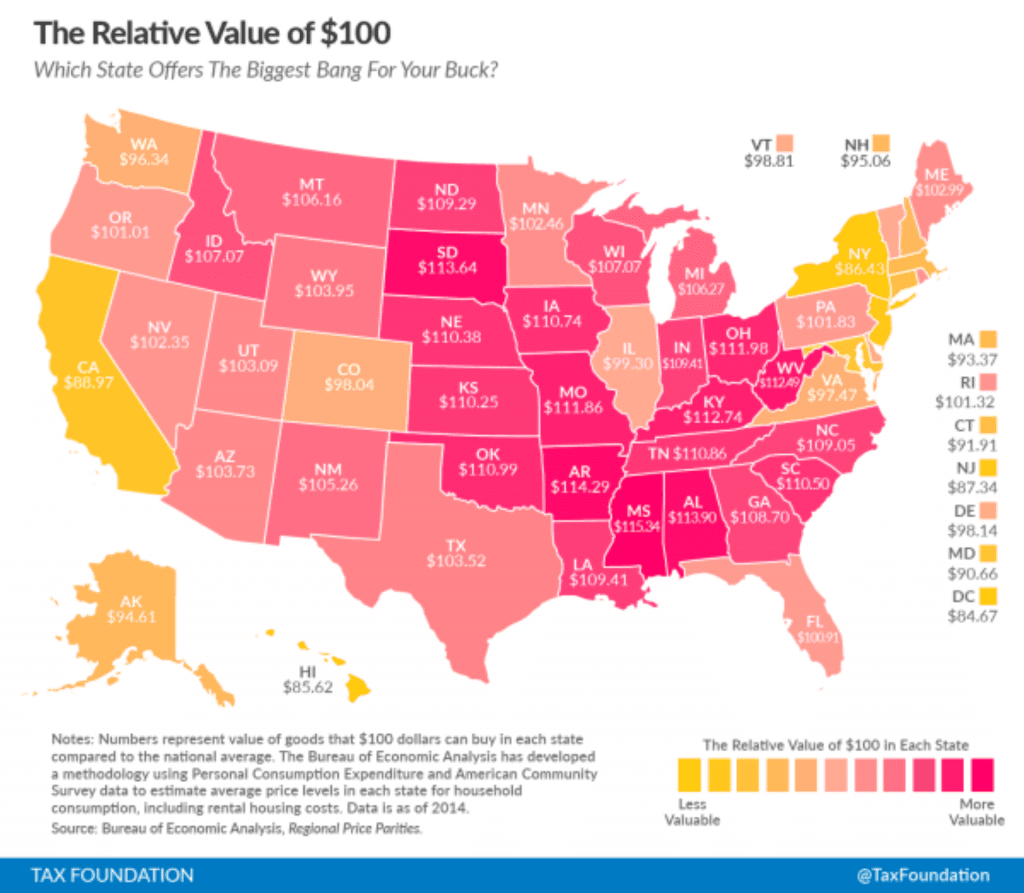If a Nebraskan and a Californian each earn $50,000 in a year, which person is richer?
If you said “neither,” guess again. The Nebraskan is richer.
How is that possible when both people have $50,000? The difference in wealth is caused by the difference in purchasing power.
Purchasing power is a currency’s value in terms of how much that money can buy—in other words, the bang for your buck. $100 gets you a lot more in places where food, housing, and other necessities are cheaper, and a lot less in places where those things are more expensive.
It’s why someone making $50,000 in New York might make instant ramen every night in her shared apartment’s tiny kitchen, while someone making $50,000 in Mississippi can eat take-out in her 3 bedroom house. They earn the same amount, but the person in Mississippi is richer because each dollar goes further.
The relative value of $100
This map from the Tax Foundation breaks down the real value of $100 in all 50 states, once you take purchasing power into consideration:


As you can see, how far $100 gets you is very different from state to state.
This is more than just an interesting statistic, though. Purchasing power differences can also affect how national policies affect people across the country. While the national minimum wage might be $7.25, for example, the real value of that money depends greatly on which state you’re in.
You can read the full article over at the Tax Foundation’s blog for more information about the value of $100 in the U.S. and for additional charts.
To read more about the benefits of a free market economy, be sure to check out our cluster page by clicking on the button below.
This article was originally published on the Learn Liberty blog
This piece solely expresses the opinion of the author and not necessarily the organization as a whole. Students For Liberty is committed to facilitating a broad dialogue for liberty, representing a variety of opinions.

















